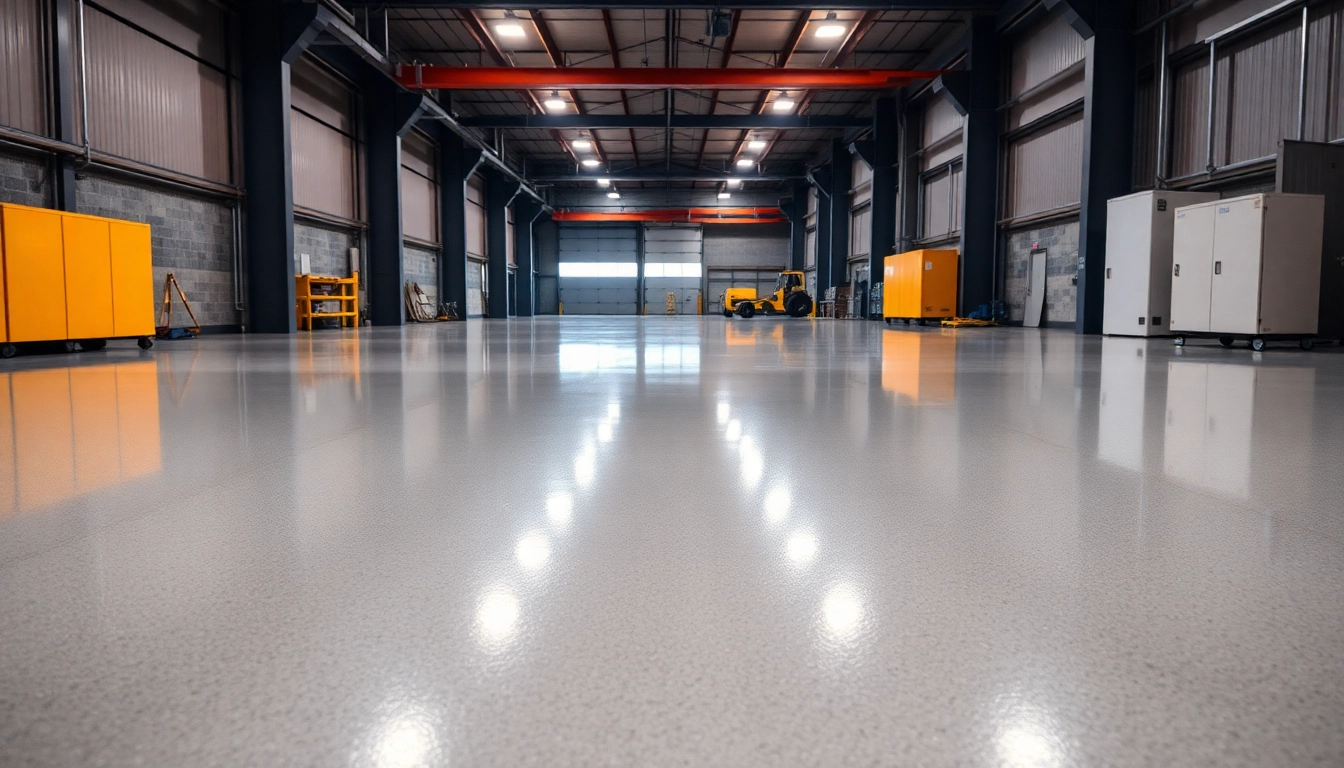Introduction to Epoxy Resin Floors
In recent years, epoxy resin floors have rapidly gained popularity across residential, commercial, and industrial sectors due to their exceptional durability, aesthetic appeal, and versatile applications. As an advanced floor coating solution, epoxy resin floors offer a compelling alternative to traditional flooring options like tiles, concrete, or carpet, providing a seamless, resilient surface that withstands heavy foot traffic, chemical exposure, and mechanical wear. Whether transforming a garage into a sleek workspace or upgrading a commercial warehouse for better safety and hygiene, understanding the fundamentals and benefits of epoxy resin floors is essential for making informed choices. For those considering a renovation or new installation, exploring expert insights and practical guidance will ensure successful implementation and long-lasting results.
What Is an Epoxy Resin Floor?
An epoxy resin floor is a type of seamless flooring system created by applying a specialized epoxy coating directly onto a prepared concrete or subfloor surface. The epoxy itself is a two-component resin composed of a resin base and a hardener, which, when combined, undergo a chemical reaction resulting in a hard, durable, plastic-like finish. This coating cures to form a solid, protective layer that adheres tightly to the substrate, creating a uniform surface devoid of joints, cracks, or imperfections.
Unlike traditional paint or surface sealants, epoxy resin floors are engineered for exceptional strength and chemical resistance. They can be customized with various additives, pigments, and textures to achieve different aesthetic effects, from high-gloss finishes to decorative flake or quartz systems. The self-leveling nature of many epoxy formulations ensures a smooth and consistent surface, perfect for environments requiring both practicality and visual appeal.
For a comprehensive overview and professional installation options, visit Epoxy resin floor.
Key Benefits and Applications
Durability and Resistance
Epoxy resin floors excel in environments exposed to heavy use, chemicals, and impact. Their resistance to abrasion, impact, and corrosive substances makes them ideal in manufacturing plants, garages, hospitals, and food processing facilities. The surface’s chemical resistance protects against oils, solvents, and acids, prolonging the lifespan of the underlying concrete.
Ease of Maintenance
Once cured, epoxy floors are easy to clean, requiring only regular sweeping and damp mopping. The seamless surface prevents dirt, dust, and bacteria from accumulating in joints or cracks, supporting hygiene standards in sterile or public spaces.
Enhanced Safety and Aesthetics
Epoxy coatings can be formulated with non-slip additives to improve traction, reducing slip-and-fall accidents. Their glossy finish amplifies lighting, enhancing visibility and creating a modern, professional look that boosts the aesthetic value of any space.
Applications Across Industries
- Industrial floors in factories and warehouses
- Garage and workshop surfaces
- Commercial retail spaces and showrooms
- Hospitals and healthcare facilities
- Educational institutions and public buildings
- Residential basements and home gyms
Common Challenges and Solutions
Surface Preparation Issues
Ensuring a clean, level, and sound substrate is crucial. Poor preparation can lead to peeling, bubbling, or reduced adhesion. To avoid this, remove all contaminants, repair cracks, and etch or prime the surface following manufacturer specifications.
Application Errors
Incorrect mixing ratios, inadequate curing conditions, or applying in unsuitable weather can compromise the finish. Use precise measurement tools, adhere to recommended curing temperatures, and work in optimal conditions to achieve a flawless coating.
Cost and Over-Application
While epoxy flooring is a cost-effective long-term solution, initial investments can be significant depending on surface area and complexity. Over-application can lead to excess thickness, prolonging curing time and increasing costs. Consulting with specialists can help determine the right thickness and materials for your project.
Resolution Strategies
- Work with experienced contractors or follow detailed DIY guides from reputable sources.
- Use high-quality epoxy formulations suited for your specific environment.
- Ensure strict adherence to mixing and application instructions.
- Implement proper curing and ventilation procedures for optimal results.
Choosing the Right Epoxy Resin for Your Space
Types of Epoxy Resins Explained
Epoxy resins come in various formulations, each tailored for specific needs:
- 2-Component Standard Epoxy: Suitable for general purpose coatings, offering good adhesion and chemical resistance.
- Self-Leveling Epoxy: Designed for creating smooth, high-gloss floors with minimal imperfections, ideal for visible areas.
- High-Performance Epoxy: Engineered for heavy-duty industrial applications demanding maximum durability.
- UV-Stabilized Epoxy: Resists yellowing and degradation from sunlight, suitable for outdoor or brightly lit indoor environments.
- Decorative Epoxy Systems: Incorporate flakes, quartz, metallic pigments, or textures for artistic or branded finishes.
Factors Influencing Selection
Choosing the appropriate epoxy depends on several factors:
- Substrate Condition: Poorly prepared or cracked concrete may require specialized formulations.
- Environmental Exposure: Consider chemical, UV, and impact resistance based on usage.
- Foot Traffic and Load: High-traffic or heavy machinery areas necessitate thicker, more durable coatings.
- Budget Constraints: Balance between cost and performance to meet project goals.
Comparing Cost and Quality
While premium epoxy options involve higher upfront costs, they often offer superior longevity and resistance, reducing maintenance and replacement expenses over time. Budget selections should not compromise on surface preparation and quality adherence, as subpar application can undermine even the best materials.
Step-by-Step Guide to Installing an Epoxy Resin Floor
Surface Preparation Techniques
Proper preparation is the foundation of a successful epoxy application:
- Clear the area of all debris and contaminants.
- Repair cracks or damages using suitable patching compounds.
- Etch or grind the surface to create a textured profile for better adhesion.
- Apply a primer compatible with epoxy to enhance bonding.
Mixing and Application Tips
Follow precise instructions for mixing resin and hardener, typically using a mechanical mixer:
- Measuring components accurately to ensure proper curing.
- Mixing thoroughly for the recommended time to avoid unmixed pockets.
- Pouring the epoxy onto the floor and spreading evenly with rollers or squeegees.
- Using additives such as pigments, flakes, or anti-slip materials during application.
Finishing and Curing Processes
After application:
- Allow the epoxy to cure in controlled conditions, typically 24–72 hours, depending on formulation.
- Avoid foot traffic or heavy loads during curing.
- Apply multiple coats if necessary, with proper sanding or cleaning between layers.
- Consider applying a topcoat for enhanced UV stability or decorative effects.
Maintaining and Enhancing Your Epoxy Floor
Cleaning and Preventative Care
Routine upkeep ensures long-term performance:
- Sweeping regularly to remove dirt and debris.
- Using mild detergents and damp mops for cleaning.
- Addressing spills immediately to prevent staining or damage.
Adding Decorative Effects and Textures
Enhance aesthetics by integrating decorative elements:
- Colored flakes or quartz for textured, slip-resistant surfaces.
- Metallic pigments for a shimmering, high-end look.
- Stamps and stencils to create unique patterns.
Troubleshooting Common Issues
Despite meticulous planning, issues may arise:
- Bubbling or Blistering: Usually from moisture or improper mixing; ensure thorough surface drying and correct procedures.
- Peeled or Cracked Finish: Often due to poor surface prep; recoat after proper repair and surface treatment.
- Discoloration or Yellowing: Common with non-UV-stabilized epoxy; select UV-resistant formulations for sunny locations.
Performance Metrics and Industry Standards
Assessing Durability and Resistance
Testing protocols such as ASTM standards evaluate properties like abrasion resistance (ASTM D4060), chemical resistance, and impact toughness. A high-performance epoxy should surpass baseline industry requirements, ensuring longevity under demanding conditions.
Environmental Considerations
Eco-friendly formulations with low VOCs, plant-based additives, or water-based epoxy options reduce environmental impact. Proper ventilation during installation and post-curing ensures healthier indoor air quality.
Future Trends in Epoxy Flooring
Advancements include UV-stable, self-repairing, and anti-microbial epoxy systems. Innovations aim for sustainable options, increased flexibility, and enhanced aesthetic capabilities suitable for evolving industry demands.



